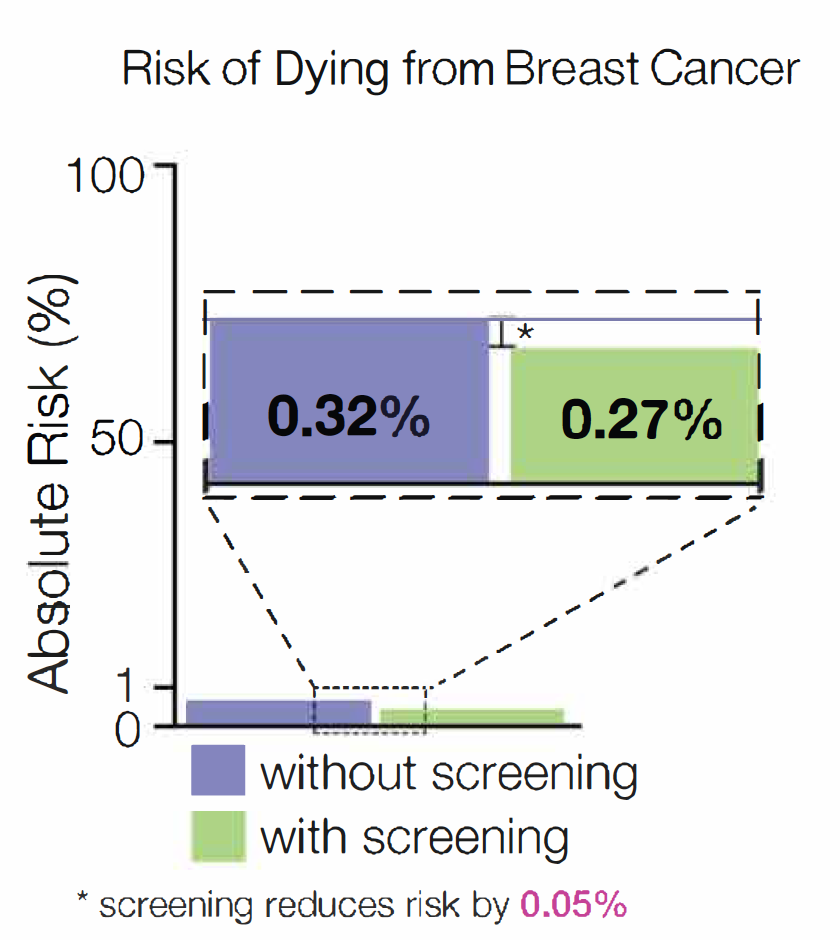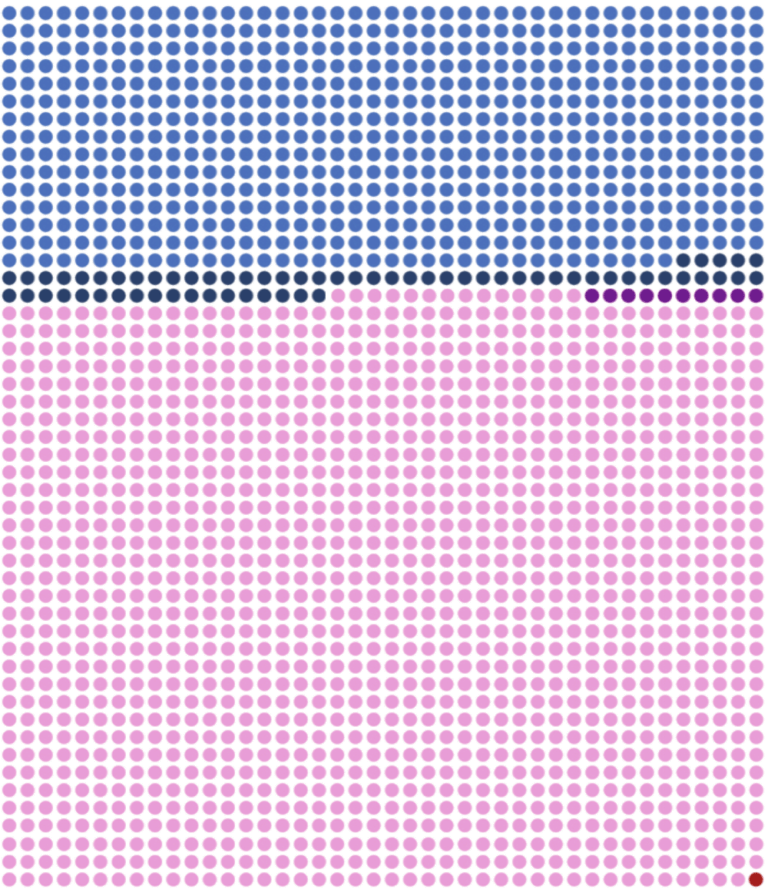Breast Cancer (2011) —Risks & Benefits, Age 40–49
The Task Force released draft recommendations for breast cancer screening in 2024. The 2011 and 2018 clinical practice guidelines are no longer current. Please click here to view the updated draft recommendations for breast cancer screening.
“Should I be screened with mammography for breast cancer?”
For women between 40 and 49 years of age:
- Among women who do not screen, the risk of dying from breast cancer is: 1 in 313
- With regular screening your risk of dying of breast cancer is: 1 in 370
However, with regular screening:
- …your risk of having a false positive mammogram requiring further screening is: 1 in 3
- …you risk of having a biopsy is: 1 in 28
- …your risk of having part or all of a breast removed unnecessarily is: 1 in 200
Be informed!
Risk

You may hear the risks or benefits of breast cancer screening described as either absolute orrelative. But what does all this mean and how does it apply to you?
The main difference is that absolute risk takes into consideration the fact that whether or not you get screened or treated, you still have a baseline risk of dying of breast cancer: 1 in 313 or 0.32%.
With regular screening that risk changes to: 1 in 370 or about 0.27%. Relative risk does not consider baseline risk in the same way and may lead to confusion about how regular screening reduces risk.
The absolute risk is simply the difference in risk between regular screening (0.27%) and no screening (0.32%): 0.32% − 0.27% = 0.05%
Therefore screening in women aged 40–49 reduces your absolute risk of dying of breast cancer by0.05%. So the absolute benefit of screening is 0.05%.
Relative risk only looks at the reduction of risk as a proportion of the total risk (so it doesn’t consider that you are already at risk of cancer, this can lead to larger values than absolute risk):0.05% ÷ 0.32% = 15%
Thus, screening in women aged 40–49 reduces your relative risk of dying of breast cancer by 15%. So the relative benefit of screening is 15%.
So how does this translate into actual numbers?
Among 100,000 women aged 40 to 49 who are screened every 2 years for 11 years:
- 270 would die of breast cancer
- 32,700 would experience a false alarm
- 3,600 would have a biopsy
- 500 would have part or all of a breast removed without having cancer
- 50 would escape a breast cancer death
Among 100,000 women aged 40 to 49 who are not screened for 11 years:
- 320 would die of breast cancer
- 99,680 would not
Absolute benefit of screening with mammography
If we screened 2,100 women, aged 40–49 years, at average risk of breast cancer every two years for 11 years…

If we wanted to describe the previous information in regards to the effect on an individual woman then we can look at what would occur in a base of 2,100 women instead of 100,000.In the graphic above, each dot represents 1 woman ( ○ = 1 woman).
- …about 700 women would experience a false positive mammogram requiring further imaging
- …75 of these women would have a biopsy, all to confirm that they do not have breast cancer
- …at least 10 women would have part of all of a breast unnecessarily removed and bear the burden of over-diagnosis
- …1 woman would escape a breast cancer death
